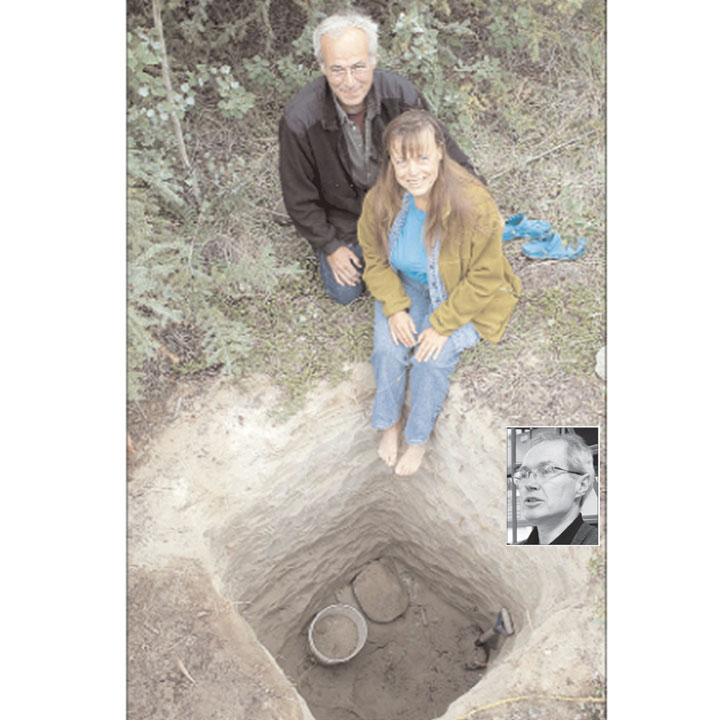
Photo by Whitehorse Star
TELLING DISCOVERY – The discovery of an ancient bison jaw by Mary and Rolland Girouard last summer has provided more insight than just the animal’s 7,100-year-age. Inset Greg Hare. Star file photo

Photo by Whitehorse Star
TELLING DISCOVERY – The discovery of an ancient bison jaw by Mary and Rolland Girouard last summer has provided more insight than just the animal’s 7,100-year-age. Inset Greg Hare. Star file photo
A bison jaw unearthed last summer on the terrace overlooking the Takhini River has been dated at 7,100 years old.
A bison jaw unearthed last summer on the terrace overlooking the Takhini River has been dated at 7,100 years old.
The radiocarbon dating and the subsurface depth of the jaw has also provided further insight into the historic geology of the area, Yukon government archeologist Greg Hare explained in an interview Monday.
Results of the carbon dating were received last week from the commercial lab in Florida.
The jaw was discovered while Rolland and Mary Girouard of Rivendell Farm, off the Takhini Hot Springs Road, were digging an outhouse on their property in preparation for a new pick-your-own commercial garden operation.
It was discovered at a depth of about 2.5 metres (eight feet).
“Normally, if something is 7,000 years old, it is usually only 30 to 60 centimetres below the surface,” Hare said.
The archeologist said he conferred Monday with local geologist Jeff Bond.
Bond indicated the depth of the jaw comes as no surprise, given the timing of the events after the ice age began receding 11,000 years ago.
As the ice left, the Whitehorse valley was a huge lake. The amount of flow through the outlet of Lake Laberge essentially controlled how fast the area drained, Hare said.
As the outlet became larger and larger, water levels dropped and rivers began to form.
“So for the Takhini River to be up that high is not surprising,” Hare said.
“He (Bond) said that lines up almost perfectly with where he thought the Takhini River would have been 7,000 years ago.”
Rolland Girouard estimates the river currently sits about four to 4.5 metres below the elevation at which the jaw was located, and is about 100 to 150 metres away.
Hare said the oldest human remains discovered so far in the Whitehorse valley were located in the Annie Lake area, and were dated at 7,200 years old.
Chuck Tobin, Star Reporter
In order to encourage thoughtful and responsible discussion, website comments will not be visible until a moderator approves them. Please add comments judiciously and refrain from maligning any individual or institution. Read about our user comment and privacy policies.
Your name and email address are required before your comment is posted. Otherwise, your comment will not be posted.
Be the first to comment